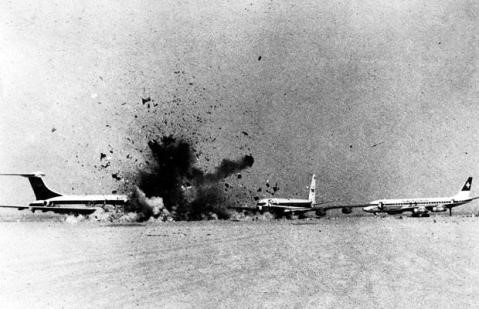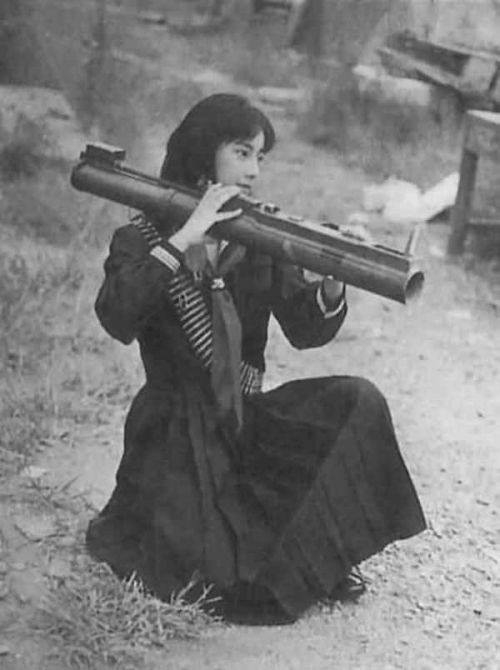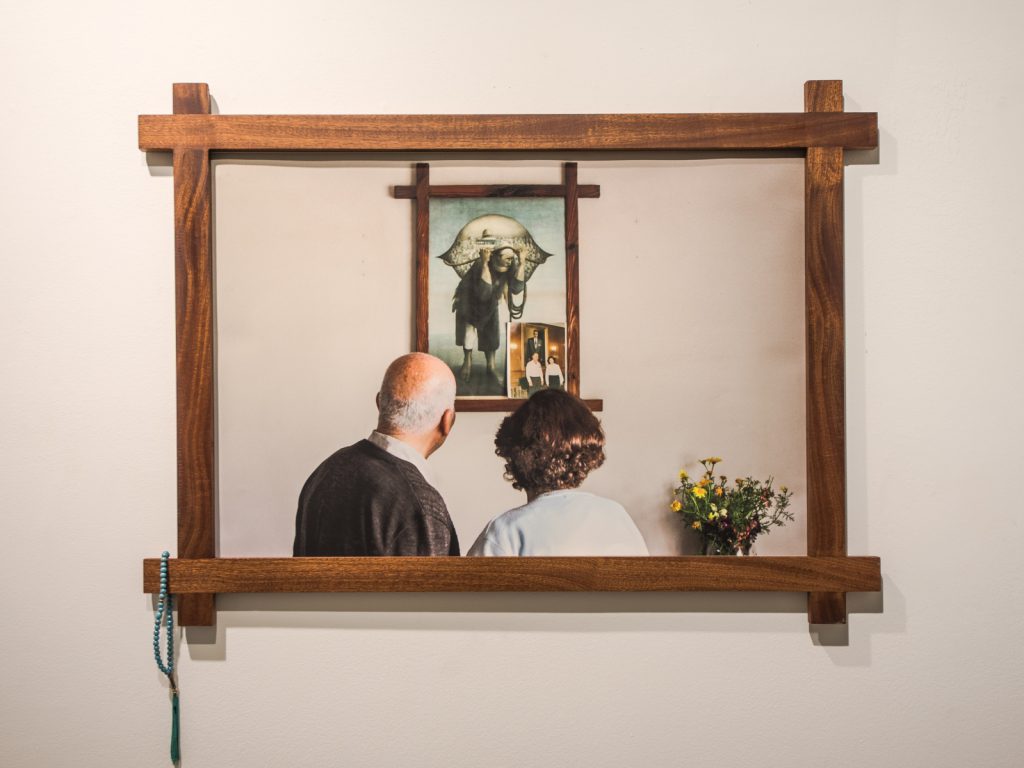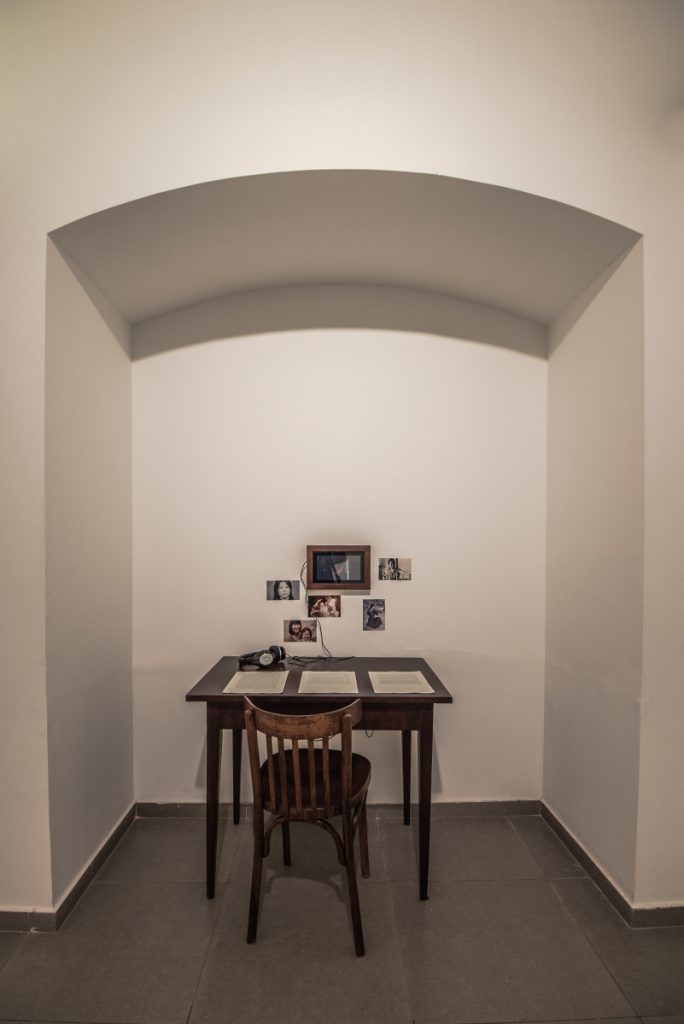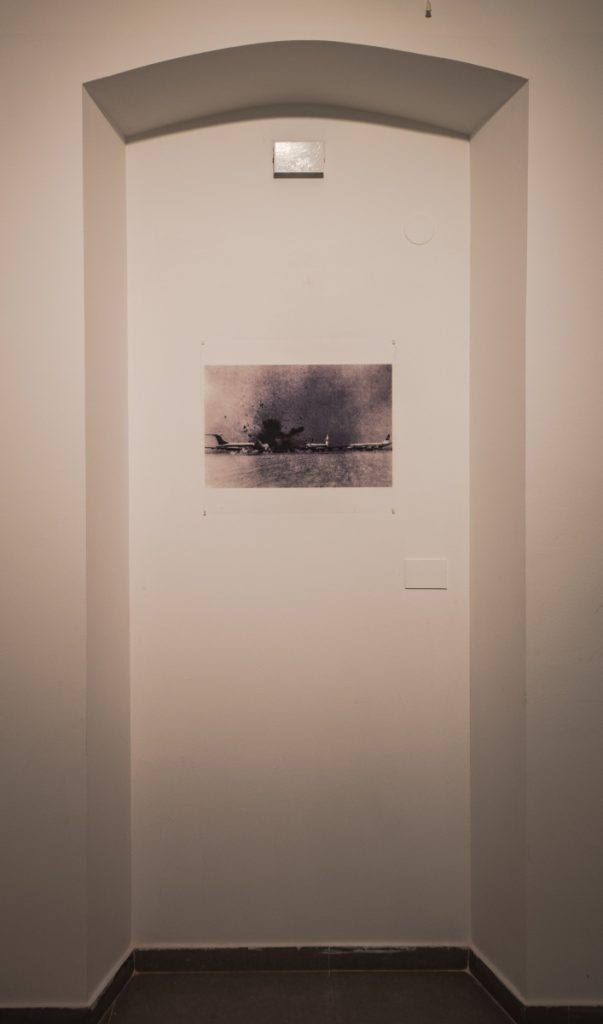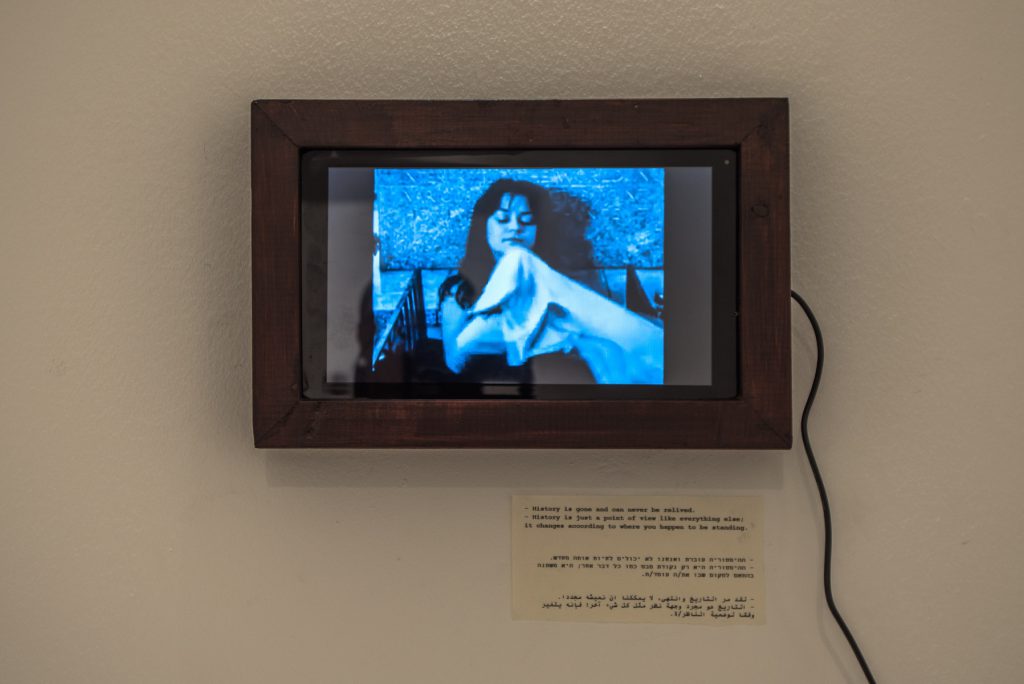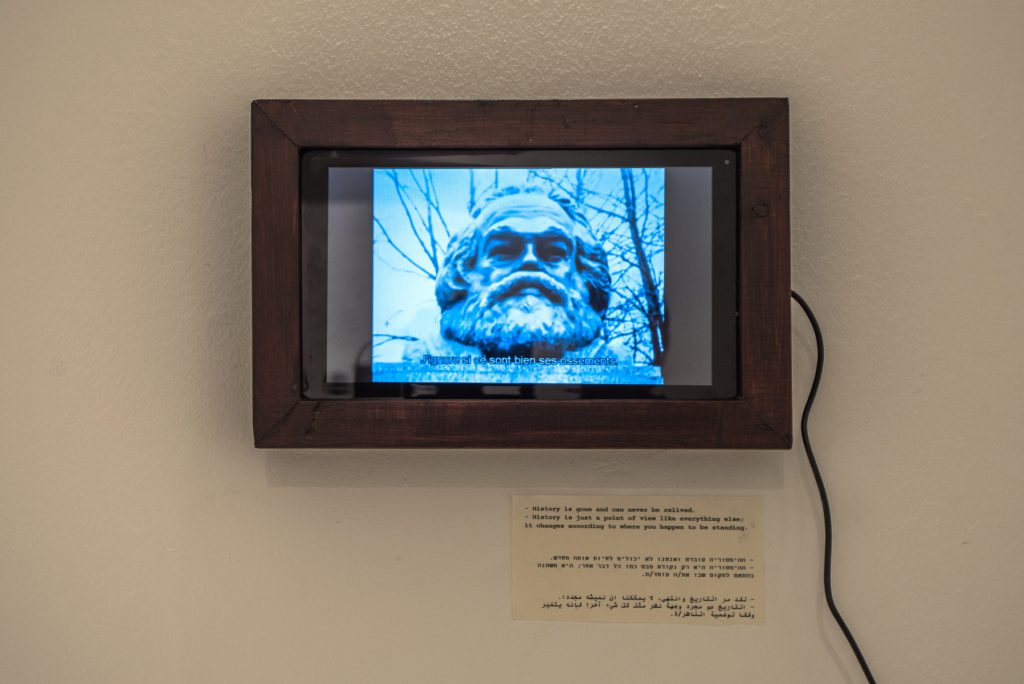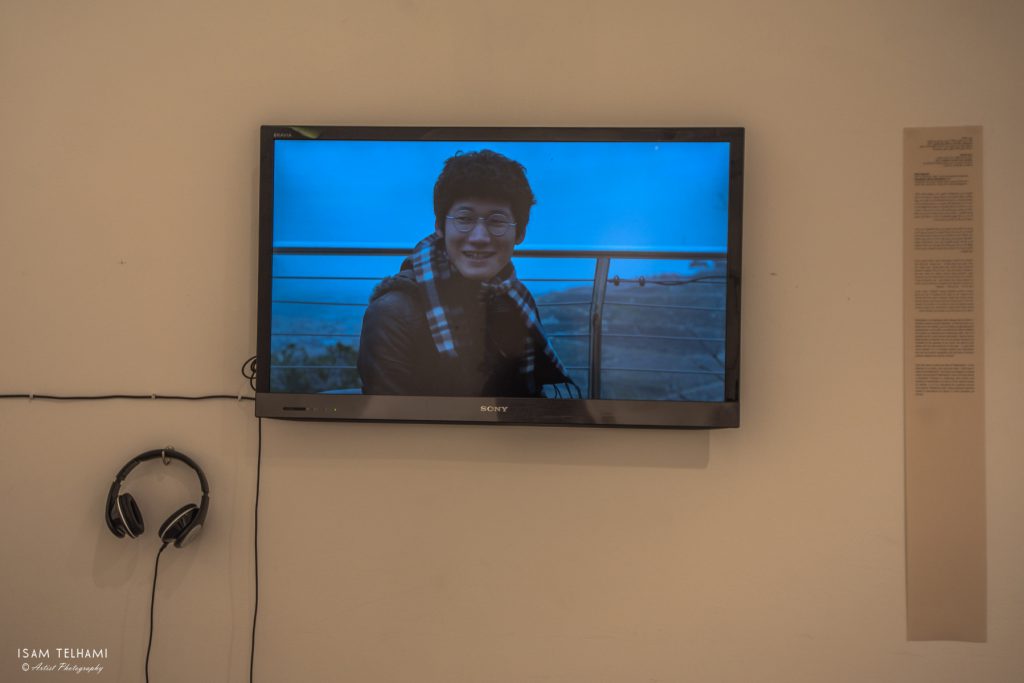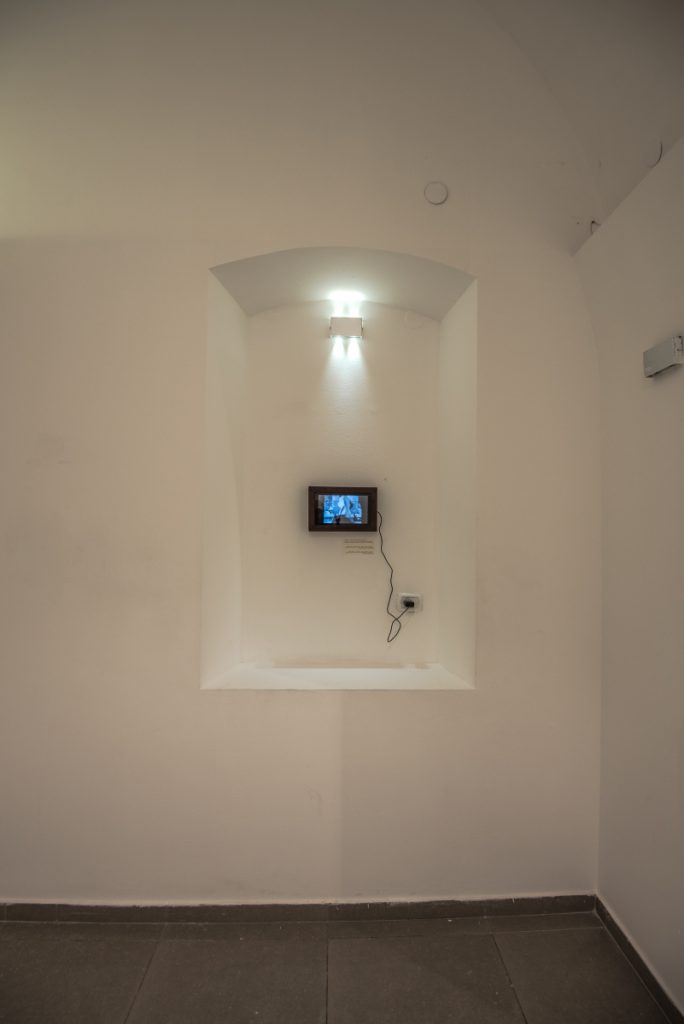from “Ghost Dance“, Group exhibition curated by Fadwa Naamna, Bet Hagefen, 2017 .
Palestinian, all too Palestinian, a photo from a mixed media installation by Ruba Salameh, 2017, Beit Hagefen Gallery, Haifa
Ruba Salameh’s work displays two wooden frames. One is a reconstruction of the frame that appears in the photograph, which has been built by her grandfather dozens of years ago. Within the frame that hangs in their home, Salameh’s grandparents are facing a photograph of Suliman Mansur’s painting, Jamal el Machmal (the Camel/Carier of Heaviness) – a painting that has become an icon in Palestinian culture, symbolizing the Palestinian refugee experience and the identity of the first generation of Palestinian refugees. In another photograph, Salameh’s parents are standing in front of a photo of Abdel Nasser, a symbol of the al Nasiriah – the second generation of Palestinians living inside the Green Line who had supported him and were influenced by the Communist Movement, promoting a secular world view. On the original photograph hangs a string of prayer beads that has been there for years in Salameh’s grandparents’ living room. This religious object is commonly given as a gift after the fulfillment of the Hajj to Mecca. The installation includes other elements and items that were discovered during the archival research, which relate to the local demographic diversity and the historical evolution of complex identities that have been passed down to the dynamic present.
‘Palestinian, all too Palestinian’ was commissioned by Beit Hagefen Gallery in collaboration with curator Fadwa Naamna in 2017.
brief description or outline of this work:
Installation of mixed media; video, sound, 02:30 min, 02:30 mins, 00:36 min, 04:40 min, and photographs,
Nationalism is an ideology which always has its Other. It’s therefore carries a double distortion: onthe one hand, you distort your own identity, your own history, by glorifying and praising them; on theother, you distort the Other’s identity and history by darkening and obliterating them. But is it possible at all to exist beyond nationalism, beyond some determination of identity? Are we not always haunted and inhabited by the specters of our home, the grief for lost places and the recurrences of the past – a past that never passes? Or is it through identity and nationalism that one can acquire recognition and put forth a common political existence as well as a future?
This work aims to probe the idea of “Nationalism”. In the absence of a country, one must ask today: “what does it mean to be Palestinian?” How does one engage in a critical inquiry into the idea of “Nationalism” when one lives without a homeland? Perhaps by presenting other stories and histories of identification as well as of the diverse quests for identity; or is it by expanding the questions around and beyond “Palestinian-ness” using particular historical events to deconstruct the layers in which identities are formed.

